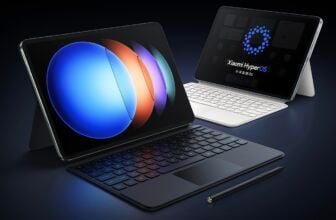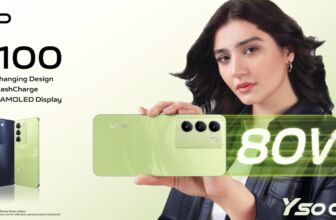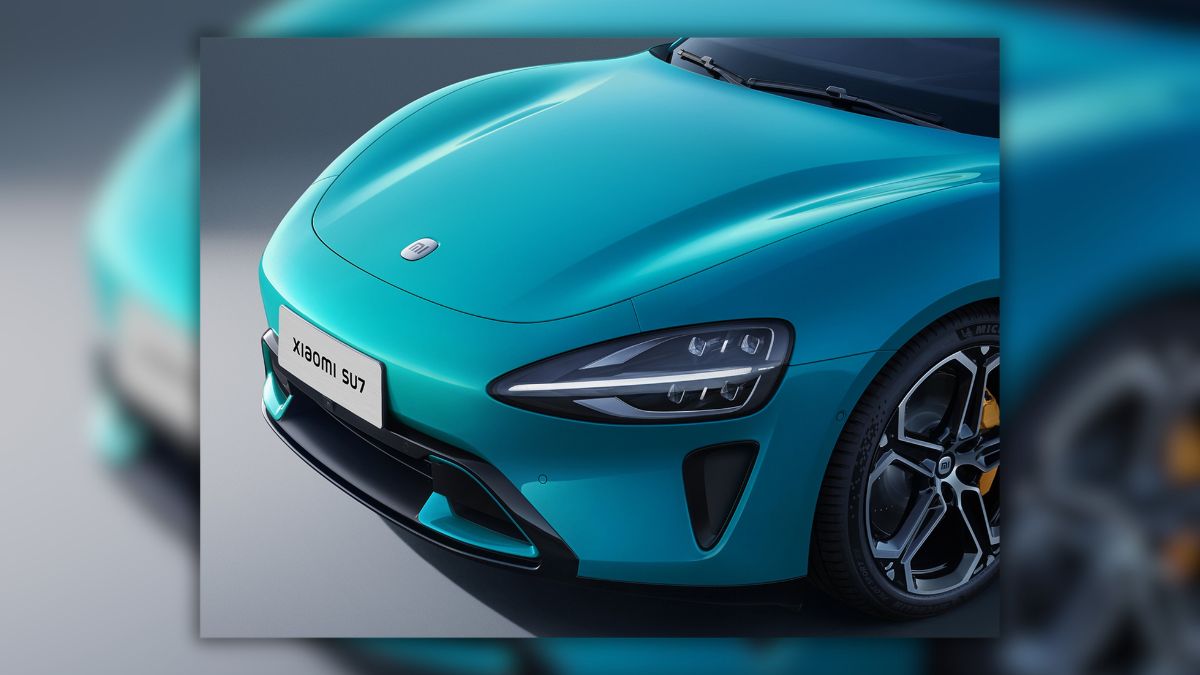
How to premature two days ago, the electric car Xiaomi SU7 was not presented today. Contrary to what many colleagues or presumed colleagues have said, the brand has not launched the first electric vehicle on four wheels today but he only explained the technology on board it. Lei JunIn the company of Yu Liguo, vice president of Xiaomi Auto and political commissar of Xiaomi Auto headquarters in Beijing, revealed the above-mentioned information. Let's see them together.
Features and specifications of Xiaomi SU7
On the Chinese social network Weibo, the president of Xiaomi Lei Jun is holding a conference in which he explains all the technology and news on Xiaomi SU7. This is, for those who don't know, the the brand's first electric car. However, this was not presented today: the vehicle will officially be released in China in 2024. Today only all the details of the integrated technology have been presented and made official. But let's get started.
Lei Jun revealed that 3400 engineers worked on the first Xiaomi vehicle, with a total investment in research and development of over 10 billion. During this event, Lei Jun highlighted the importance of the culture behind electric cars. You stated that this year Xiaomi has defined the goal for the new decade: to become global leader in next-generation hardcore technology. If the brand wants to win in the next decade, it will need a team capable of tackling difficult challenges.
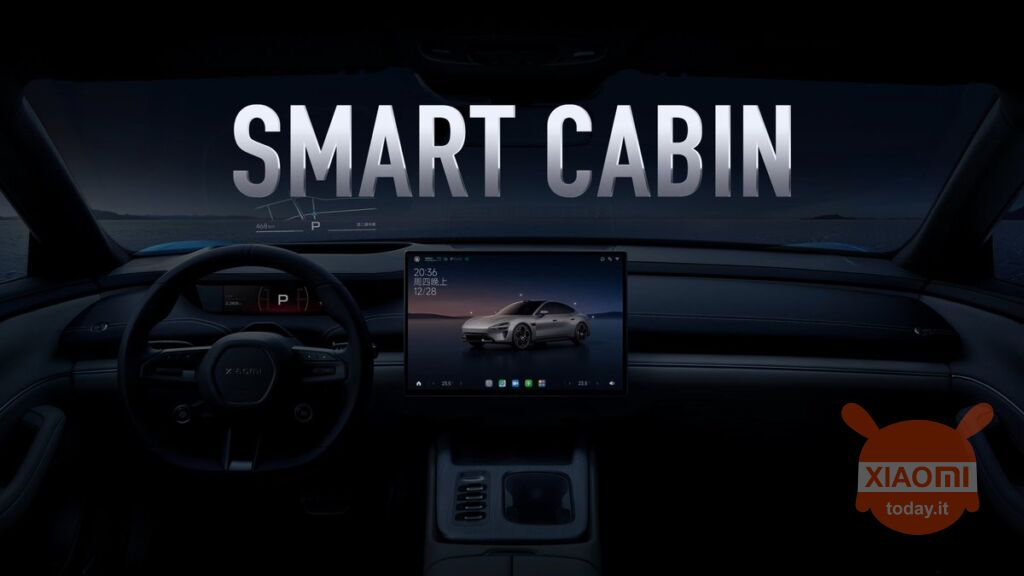
The giant announced the intelligence of the Xiaomi SU7 cockpit (which we called Xiaomi Auto before knowing the name), which is equipped with a chip Qualcomm Snapdragon 8295, based on technology Arises OS, and mainly includes a “central ecological screen", one "folding instrumental screen", A"HUD", and two "rear extendable screens“, boasting a strong ecosystem and supporting Apple Lossless Audio CODEC (ALAC), AirPlay e C.
This vehicle is equipped with a central ecological screen from 16.1 inches, with a resolution of 3K, a 16:10 aspect ratio, a 91.7% screen-to-body ratio, 1024 levels of dynamic brightness adjustment, and an interface that supports plug-and-play, with a claimed application startup of 1.49 seconds, a cockpit system update of 3 minutes, and a full vehicle update of 30 minutes.
Lei Jun particularly highlighted the central screen UI, which features a 3D digital car model, support for synchronization with the external environment and transition animations when switching from outside to inside the vehicle. Furthermore, the vehicle also features a “multitasking card layout” and a “quick menu”, which promise a consistent interaction experience with smartphones and tablets. Basically, you can choose different functions by swiping, a bit like on Tinder.
As for the HUD, the vehicle is equipped with a 56 inch HUD, with a wide view of 10 degrees x 3.6 degrees, a contrast ratio of 1500:1 and a virtual brightness of 13000 nits.
As for the folding instrument screen, the vehicle system is equipped with one screen from 7.1 inches, capable of displaying essential driving information. Lei Jun also pointed out that the back seat of the Xiaomi SU7 is compatible with Xiaomi Pad tablet and other expansion devices, can support up to 20kg, and can be connected to the vehicle system for greater interaction.
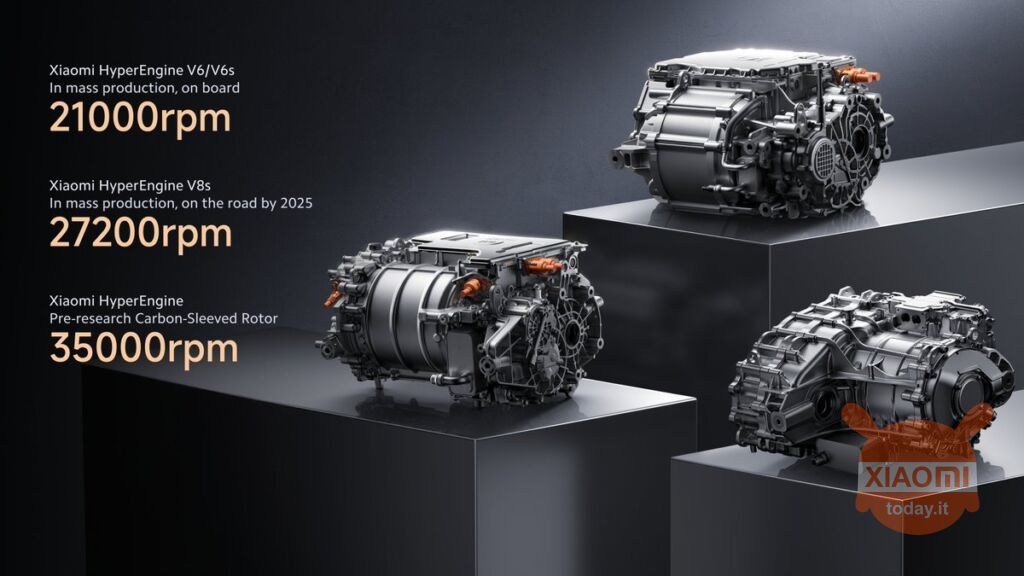
As for the car engine i V6 and V6s models, with a maximum rotor speed of 21.000 rpm, are currently in mass production. The even more impressive model, Xiaomi HyperEngine V8s, which reaches 27.200 rpm, will be on the market by 2025.
The power reserve of Xiaomi SU7 according to the CLTC cycle is estimated at 800 km. Support 800V ultra-fast charging, can charge 200 km in 5 minutes and 510 km in 15 minutes, which is better than Tesla Model S Plaid.
Xiaomi SU7 positions itself as a powerful and eco-friendly C-class sedan with the lowest aerodynamic drag coefficient in the world Cd 0,195. It has a length of 4997 mm, a wheelbase of 3000 mm, a width of 1963 mm and a height of 1440 mm.
Xiaomi's electric car is equipped with headlights that adopt a 4-lens ADB adaptive design with a 12-pixel matrix that can intelligently adapt to changes in light, providing excellent illumination when driving at night. The 160° ultra-wide-angle illumination (80° on each side) offers clear visibility of the road surface, while the auxiliary lights automatically illuminate the inside of curves.
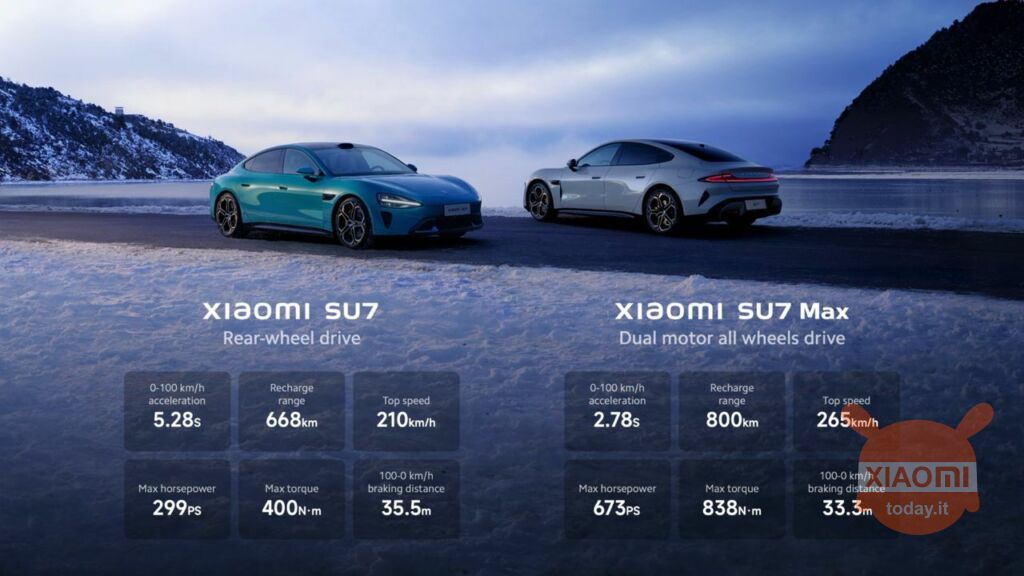
The semi-hidden design of the handle of the car door not only optimizes the aerodynamic efficiency of the car, but It also solves the freezing problem in cold weather and avoid the problems that owners of cars with retractable door handles might encounter.
Lei Jun stated that the Xiaomi SU7 car accelerates from 0 to 100 km/h in 2,78 seconds and has a maximum speed of 265 km / h. This exceeds 260 km/h for the Porsche Taycan Turbo and 250 km/h for Tesla Model 3. Supports Boost for a small turbo over very short distances and multiple riding modes. The braking distance from 100 km/h is 33,3 m, even better than the 34 m of the Porsche Taycan Turbo.
Artificial intelligence on board the car
AI-related investment has increased from 3,3 billion to 4,7 billion over the years, involving the AI laboratory founded by Xiaomi in 2016, which now has 3000 AI engineers. Xiaomi SU7 has full AI enablement, in-house development of core algorithms and BEV, Transformer and OCC occupancy network, as well as comprehensive understanding of large language models.
Thanks to BEV technology with zoom, Xiaomi SU7 is able to switch between different recognition mode depending on the driving scenario; It also has a technology called "super resolution", which can improve the accuracy of obstacle recognition and also supports the reduction noise intelligent in rain and snow conditions.
Furthermore, Xiaomi has developed its own road model without a map, which generates the road topology in real time, creating high-precision maps comparable to those of Google Maps or Waze, to implement functions such as intersection recognition and automatic obstacle avoidance. In this regard, Xiaomi NOA urban navigation assistance aims to support 100 Chinese cities by the end of next year.
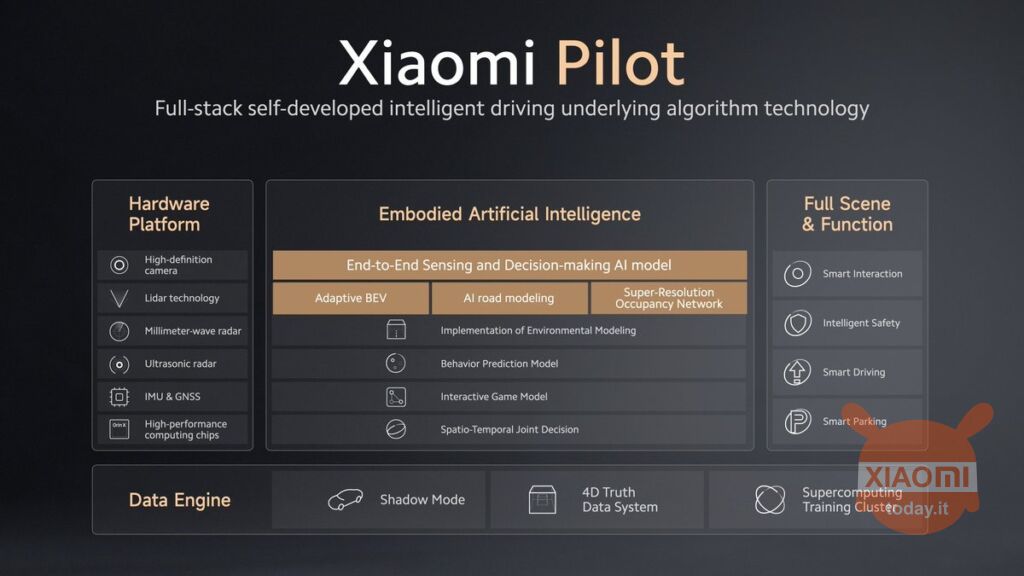
Besides that, Lei Jun also showed the automatic parking capability of Xiaomi SU7, capable of automatically passing gates, giving way to pedestrians, parking the vehicle and intelligently calling it remotely, as well as dealing with parking situations in very narrow places, all supported by the great Xiaomi decision language model, which combines perception and decision algorithms into one large model that observes and adapts dynamically in real time.
The company claimed that Xiaomi SU7 is equipped with a integrated perception + decision model which works like this: traditional models encountering a situation with an accuracy of 0.1m could judge it impossible to park, while Xiaomi's end-to-end model can complete perception and decision simultaneously, allowing park a 200cm vehicle in a 210cm space.
From the hardware point of view, Xiaomi SU7 is equipped with two NVIDIA Orin chips, for a computing power of 508 TOPS, and also has a lidar, 11 high-definition cameras, 3 millimeter wave radars and 12 ultrasonic radars.
Article under continuous review…



